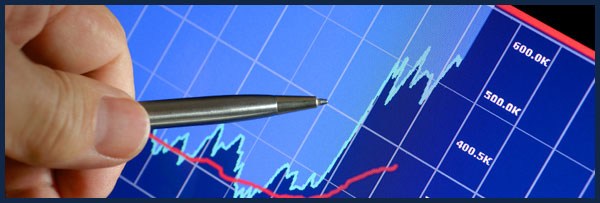London Gold Market Report
from Ben Traynor
BullionVault
Wednesday 15 February 2012, 09:00 EST
SPOT MARKET gold prices rose to $1732 per ounce Wednesday lunchtime in London, slightly above where they started the week, as European stock markets dipped amid ongoing uncertainty over Greece’s second bailout.
Silver prices tested $34 per ounce – 1% above last Friday’s close.
“Critical support [for gold prices] is in the $1706 area and we would be bearish if this level fails to hold,” says the latest technical analysis from bullion bank Scotia Mocatta.
“Resistance is last week’s high around $1752.”
Euro gold prices meantime jumped to €42,528 per kilo (€1322 per ounce), as the Euro fell sharply against the Dollar Wednesday lunchtime, after German finance minister Wolfgang Schaeuble expressed concern over whether Greece can be given its second bailout.
“I have doubts that all conditions have been fulfilled,” Schaeuble told a German radio station. Schaeuble has also revealed that European policymakers are still awaiting a debt sustainability report on Greece, according to The Telegraph.
Eurozone finance ministers postponed a meeting scheduled for today, at which it was hoped they might sign off the bailout. Jean-Claude Juncker, chairman of the Eurogroup of single currency finance ministers, says more work is needed for Greece to meet a requirement to find €325 million of additional deficit cuts.
“Furthermore,” added Juncker on Tuesday, “I did not yet receive the required political assurances from the leaders of the Greek coalition parties on the implementation of the program.”
Antonis Samaras, leader of Greece’s New Democracy party and widely tipped to be next prime minister, has suggested he could seek to renegotiate any deal if he is elected in April’s elections.
Before then, Greek government bonds worth €14.5 billion mature on March 20. Greece will not be able to meet these repayments unless European leaders sign off the €130 billion rescue package.
A Greek default would have “devastating consequences”, according to European Commissioner on Economic and Monetary Affairs Olli Rehn – who yesterday also told Spain’s government it needs to be specific about its deficit-cutting measures.
The Eurozone however is “better prepared than two years ago” for a Greek default, Schaeuble said at the start of this week.
“We are getting closer to default,” a senior Eurozone official tells the Financial Times.
“Germany, Finland and the Netherlands are losing patience.”
Greece’s economy shrank 7% year-on-year to the fourth quarter of 2011, official government data published Tuesday show. French bank BNP Paribas meantime has written down the net present value of its Greek debt holdings by 75%, according to Q4 2011 results published today.
The fall in the Euro reversed gains made during Wednesday’s Asian session, following comments from Chinese premier Wen Jiabao.
“China is ready to get more deeply involved in participating in solving the European debt issue,” Wen told a joint press conference held in Beijing with Herman van Rompuy, president of the European Council.
The Eurozone economy as a whole shrank by 0.3% in Q4 on a seasonally adjusted basis, according to figures from Eurostat this morning.
“In the long run, the Eurozone debt crisis is still supportive of gold,” says Hou Xinqiang, analyst at Jinrui Futures in Shenzhen, China.
Here in the UK, the economy is “moving in the right direction”, according to Bank of England governor Mervyn King’s opening remarks at today’s Inflation Report press conference.
Britain’s unemployment rate meantime remains at 8.4%, according to data released by the Office for National Statistics on Wednesday.
“Moving to a world of steady growth, inflation close to our 2% target, and a more normal level of interest rates, will take time,” King warned this morning.
Responding to suggestions that quantitative easing isn’t working – and that the Bank is targeting the wrong assets by buying UK government Gilts – King defended the policy, saying that buying any assets for which there is no demand would be “the definition of a subsidy”.
The Bank of England expanded its quantitative easing program from £275 to £325 earlier this month. The Bank of Japan meantime, which first adopted QE over a decade ago, announced yesterday that it too was increasing the size of its asset purchase program.
Iran’s Oil Ministry meantime has denied a report made by Tehran-based English language broadcaster Press TV that it has shut off oil exports to France, Portugal, Italy, Greece, the Netherlands and Spain. The European Union last month joined the US in imposing sanctions on Iran.
Over in New York, hedge fund Paulson & Co. cut its stake in world’s largest gold ETF the SPDR Gold Trust (ticker GLD) by 15% in Q4 2011, according to SEC filings. In the same period, Soros Fund management boosted its holdings of GLD shares by 77%. The overall volume of gold bullion held to back GLD shares rose nearly 2% in Q4.
The Shanghai Futures Exchange has announced it will lower its gold trading margins with effect from March 1.
“The exchange’s move is aimed at boosting trading at a time when volatility seems to have been tamed,” says Zuo Xichao at research firm Beijing Antaike Information Development.
“Lower margin requirements will make these investments easier and more attractive because trading now requires less money to be locked up.”
Daily volatility in gold prices has halved since hitting its highest level in three years last September.
Ben Traynor
BullionVault
Gold value calculator | Buy gold online at live prices
Editor of Gold News, the analysis and investment research site from world-leading gold ownership service BullionVault, Ben Traynor was formerly editor of the Fleet Street Letter, the UK’s longest-running investment letter. A Cambridge economics graduate, he is a professional writer and editor with a specialist interest in monetary economics.
(c) BullionVault 2011
Please Note: This article is to inform your thinking, not lead it. Only you can decide the best place for your money, and any decision you make will put your money at risk. Information or data included here may have already been overtaken by events – and must be verified elsewhere – should you choose to act on it.



 The problems for Euro are far from getting addressed. The meeting of Euro zone officials turned out to be nightmare for the bloc currency. Euro zone leaders are mulling over the complete or partial delay of the bailout package to the Greece till the elections in April. The pair is printing fresh low of 1.3062. It is a one week low. The support on the downside may be seen at 1.3020 and 1.2980. The resistance may be seen at 1.3110 and above at 1.3190. The slide in Euro has also seen in other Euro crosses. EUR/JPY has fallen below 103 levels.
The problems for Euro are far from getting addressed. The meeting of Euro zone officials turned out to be nightmare for the bloc currency. Euro zone leaders are mulling over the complete or partial delay of the bailout package to the Greece till the elections in April. The pair is printing fresh low of 1.3062. It is a one week low. The support on the downside may be seen at 1.3020 and 1.2980. The resistance may be seen at 1.3110 and above at 1.3190. The slide in Euro has also seen in other Euro crosses. EUR/JPY has fallen below 103 levels.
 For the first time in four days, euro showed some gains against the dollar after China promised to give help to solve the debt crisis. This has eased the pressure on the currency as the debt crisis continues with Greece seeking to secure a second bailout. The 17-nation currency rose to its highest level against the yen; to a level it had reached two months ago.
For the first time in four days, euro showed some gains against the dollar after China promised to give help to solve the debt crisis. This has eased the pressure on the currency as the debt crisis continues with Greece seeking to secure a second bailout. The 17-nation currency rose to its highest level against the yen; to a level it had reached two months ago.
